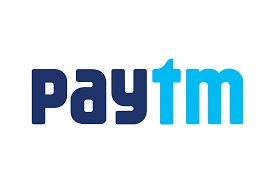In FY20-21, despite the COVID-19 pandemic and the concerns around it, 30 companies raised over Rs 31,000 crore through an initial public offering (IPO). This year seems to be on the track to outdo last year as within the first six months, 16 companies have filed their draft red herring prospectus (DRHP) with SEBI outlining the company’s business, reasons for initial public offering and financial conditions.
Here, we look at a few large upcoming IPOs which are expected to hit the market in the near future.
Upcoming IPO

Finance Minister Nirmala Sitharaman in her 2021 Union Budget speech, announced stake sale in Life Insurance Corporation (LIC) in FY22 as part of the Centre’s disinvestment efforts. The process for IPO is in the works already and the government has sought parliamentary approval to amend the LIC Act. Stock market regulatory authority Sebi has also made changes to the Securities Contracts Regulations 1957 to fast-track the IPO process.
When this was announced, the issue size of the LIC IPO was estimated to be as large as Rs 1 lakh crore. According to some estimates, LIC’s valuation could reach Rs 8-10 lakh crore in what is being touted as the “IPO of the decade” and inviting comparisons to Saudi Aramco.
In March, the government announced that LIC’s authorised capital will be increased from Rs 100 crore to Rs 25,000 crore. This increased capital will be divided up into 2,500 crore shares of Rs 10 each under the LIC Act of 1956.
Another factor that goes into the calculation of the IPO price is the overall valuation and embedded value. The independent actuary responsible for determining LIC’s embedded value is Milliman Advisors LLP India.
Overall valuation has been estimated at Rs 12.85 to 15 lakh crore by Chief Economic Advisor KV Subramanian. He has said that the government could make around Rs 90,000 crore by selling 6-7% of its stake in LIC. Based on the paid-up capital and the valuation arrived at by the CEA, the IPO share price of LIC should be between Rs 400 and Rs 600.
However, you must remember that these prices are just an estimate based on the information available. They may change if the government instead decides to issue a smaller amount of paid-up capital or the actual valuation figures change. The Centre intends to hold at least 75% of its stake in LIC for the first five years post listing and 51% subsequently after the five years are completed. Moreover, it has been announced that 10% of the LIC IPO issue will be kept for those holding policies with the insurance company.
Process of LIC’s upcoming IPO listing
In June, the government plans to ask for proposals from investment banks for the IPO. The embedded value is also currently being determined by Milliman Advisors LLP India. The LIC IPO is expected to open in the third quarter of the fiscal, around Diwali.
Here are some of the reasons for investing in the LIC IPO and the risks it entails:
| Strengths | Risks |
| LIC has a network of 13.53 lakh agents, in contrast to the 11.01 lakh agents working for more than 20 life insurance companies collectively | There is growing competition from private insurance companies that can offer better services to policyholders |
| Its total assets in FY20 were worth Rs 32 trillion, with a 69% share in the life insurance market | As a public sector undertaking, LIC is subject to certain restrictions. It is also required to alter its policies in keeping with the monetary and fiscal changes in the country |
| Its net profit in FY20 was Rs 2,712.20 crore | |
| LIC has diverse businesses – life insurance, housing finance, pension fund and mutual fund. It has also acquired IDBI Bank |

Paytm, or One97 Communications Pvt Ltd, will list on the bourses later this year by floating an initial public offering, size forecasted to be Rs 21,700 crore or $3 billion. The total valuation is expected to be around $25 billion to $30 billion. This IPO is set to topple Coal India’s 2010 offering of Rs 15,475 and become the biggest IPO by an Indian company.
The issue will be a mix of fresh shares and offer for sale (OFS). The board of directors has given Paytm an in-principle go-ahead for the IPO, and the fintech pioneer has also already sent out invitations to its stakeholders to dilute their shares ahead of the IPO. Its shareholders include institutional investors such as the Ant Group in China, Japan’s SoftBank, Elevation Capital and T Rowe Price.
How Paytm performed in FY21
The decision to invest in any company depends heavily on its previous performance. Paytm, a loss-making enterprise, is going the IPO way. Here’s a look at the key takeaways from its annual filing FY21 –
· Paytm’s operational revenue fell 14.5% to Rs 2,802.4 crore in 2020-21 from Rs 3,280.84 crore in FY20.
· Total expenses declined from Rs 6,138.23 crore to Rs 4,782.95 in FY21.
· Total revenue, including “other income” was Rs 3,186 crore as opposed to Rs 3,540 crore in FY20.
· Marketing expenses stood at Rs 532 crore in FY21 as against Rs 1,397 crore in 2019-2020, reflecting fall in total expenditure .
· The increase in employee benefit expense was to Rs 1,184 crore in FY21 as against Rs 1,119 crore.
· Overall, Paytm narrowed its losses 42% from Rs 2,942 in 2019-2020 to Rs 1,701 crore in FY21.
Why Paytm is going for an initial public offering
Paytm is looking to shift from being a digital payments provider to a financial services conglomerate that will go on to produce its own loan and insurance products, instead of simply aggregating and distributing financial products of other financial companies. In fact, Bernstein has reported that Paytm’s profitability in the future depends on its upcoming credit and insurance businesses.
Despite being a leader in the digital payments space, Paytm’s payment side of the business does not make any money. So, it has applied for an insurance and non-banking financial company (NBFC) license. Insurance regulatory authority Irda and the Reserve Bank of India (RBI) have not cleared the applications yet.
Because investors like China’s Ant Group, SoftBank of Japan, and US’ T Rowe Price enjoy a significant stake in Paytm, the upcoming IPO comes as an exercise that will limit the ownership and influence of these investors. Should the Ant Group dilute its stake, Paytm could shake off the scrutiny on Chinese money which rose after clashes at the India-China border last year.
Here are the strengths and weaknesses of Paytm:
| Strengths | Weaknesses |
| Other than raising money, Paytm’s IPO is a signal. It would be an important move in its pursuit of legitimacy amidst competitors in the eyes of the regulator and the people. | While demonetisation gave an impetus to Paytm’s digital payments business, the advent of UPI and apps enabled by it like Google Pay have quickly eaten up a significant share of the market |
| It seeks to have strict disclosure norms, a stringent corporate governance code and the obligation to deliver | The pending approval of insurance and NBFC licenses perhaps does not bode well for Paytm |
| Paytm’s pursuit of expanding to credit, insurance and wealth operations may bear fruit and lead to exponential growth in the coming years | Paytm may have narrowed its losses, but it is important to remember that it did log losses of Rs 1,701 crore in FY21 |
| Changes in technology and increased attention towards the fintech space are good for Paytm since it is a pioneer in digital payments | |
| With a large user base, Paytm can push its other products and ensure customer loyalty |

In a time when the airline sector faces its biggest challenge in the form of curbs on travel, GoAir is set to raise Rs 3,600 crore through IPO. At least Rs 2,015 crore from this will be diverted towards the repayment of outstanding loans. An additional Rs 254 crore will go towards repaying dues to Indian Oil Corporation and Rs 279 crore for replacing letters of credit issues to aircraft lessors.
After this allocation, GoAir would have a little more than Rs 1,000 crore to fund its expansion and corporate requirements. Currently, the company’s negative net worth is Rs 1,961.50 crore and liabilities overtake assets by Rs 4,362.58 crore.
Why GoAir needs a new IPO listing
GoAir’s upcoming IPO bid has been decried as an attempt to raise capital in a time when it is not only struggling with the COVID-19 pandemic but is dwarfed by immense competition. The following facts will perhaps paint a more accurate picture—
· To raise funds to meet the daily expense of fuel costs indicates that the company is pressed for cash.
· A steady rise in COVID-19 cases, coupled with movement restrictions, will lead to more losses.
· GoAir has stated that it continues to default on payments under many aircraft lease agreements, which could lead to legal action against it.
· GoAir faces stiff competition from IndiGo and SpiceJet and accounted for only 19% of IndiGo’s total income in 2019. However, earnings were in keeping with the size of its fleet.
Here’s how GoAir’s strengths weigh against its risks —
| Strengths | Weaknesses |
| Despite dim prospects from the perspective of a macro environment, vaccination drives are expected to bring back economic growth, bolstering investor sentiment | GoAir’s financials paint a grim picture. Its negative net worth is at Rs 1,961.50 crore and liabilities exceed assets by Rs 4,362.58 crore |
| Growth in the stock market shows that investors have confidence in it and GoAir’s upcoming IPO may depend on investor appetite & pricing of stock. | Only a small fraction of India’s population chooses air travel each year. Fears of COVID-19 may have a sustained effect on aviation even after the pandemic is curbed |
| The airline has a more favourable operating cost per Available Seat Kilometres(ASK) compared to its rivals | The airline continues to default on payments |
| Promoter Wadia Group’s recent infusion of funds could be of some comfort to IPO investors | It needs to raise capital through IPO for meeting daily costs expenses such as fuel costs |
| Per unit operating costs are smaller than SpiceJet’s | Its market share has remained stagnated at 10% for years |
Frequently Asked Questions:
- Are IPOs a good investment?
Investors commonly believe that the prices of stocks will increase after an initial public offering. This is why they rush to buy stocks, especially with good fundamentals, during an IPO with the intention of buying low and selling high.
- Can a company issue more shares after IPO?
Yes, a company can make a secondary offering after IPO. Secondary offerings can be either non-dilutive or dilutive. In a non-dilutive secondary offer, major stockholders sell a large part of their holding, and in a dilutive secondary offering, new shares are created for sale to the public.
- Can already listed companies issue IPO?
No, a company that has already been listed on a stock exchange cannot issue IPO. By definition, IPO takes place when a company offers its shares for the first time. Listing on an exchange comes with an IPO. However, already listed companies do make public offerings which are in addition to their IPO, like FPO.
- Can one buy shares before IPO listing?
Yes, you can buy the shares of a company before its IPO is launched. This pre-IPO trade of shares usually takes place among hedge funds and private equity funds that buy stocks in large quantities. Buyers often get discounts on the share price fixed for IPO.
- Can I buy IPO without Demat account?
No, you cannot buy IPO shares without a Demat account since share certificates are not issued in the physical format any longer. They need to be stored electronically in your Demat account.
- Can we register for IPO through Geojit?
Yes, investors can buy IPO shares through Geojit in a secure, reliable and easy manner. It has an e-IPO platform through which investors can get IPO shares along with access to in-depth research and a vast network of customer support.
- Can you sell an IPO immediately?
Yes, investors can choose to sell their IPO shares on the listing day itself. However, they will be liable for ordinary tax implications. In some cases, the company may impose a lock-up period on the shares sold for a few months. Brokerages may also levy restrictions on the immediate sale of your shares during the lock-up period.
- How do IPOs benefit companies?
Going for IPO is a cost-effective way of raising capital for companies. Companies usually go for IPO to fund their growth and expand operations. Moreover, going for IPO increases the company’s credibility since it must pass SEBI’s prerequisites before getting listed.
- Does a company’s performance improve after IPO?
The capital raised from an IPO goes towards advertising and marketing, research and development, new construction and other projects aimed at expanding the business. As a result of this expenditure, it is likely that the business will perform better after raising more capital through an IPO.
- Why is the size and number of IPOs in India expected to increase?
Equity markets are at an all-time high, and the Future economic outlook is robust. These are some of the reasons why the market is ripe for IPO. Moreover, investors’ liquidity and attractive valuations for companies have come at the right time for IPOs. The penetration of equity investment in tier II and tier III cities, seen from a sharp spike in the number of Demat accounts opened in FY21, also bodes well for companies planning IPO.









